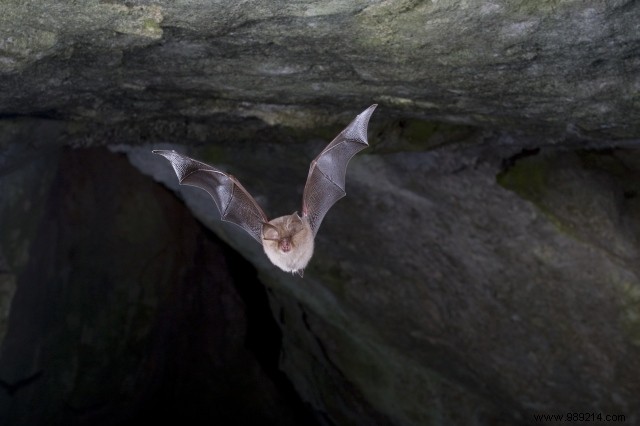Across the Channel, researchers have discovered a coronavirus close to SARS-CoV-2 in a bat, a first in Europe. Fortunately, this virus is not able to infect humans. On the other hand, it could become possible if, in the future, this agent undergoes a mutation.
Since the appearance of the SARS-CoV-2 coronavirus, different animals have taken turns taking responsibility for transmission to the human. Let us mention the pangolin, the mink and the inevitable bat. Bat species of the genus Rhinolophus in Asia are still considered to be the reservoir of the coronavirus at the origin of the current health situation. As a reminder, this virus has mutated and has finally adapted to humans .
Furthermore, the fact is that this type of bat is also present elsewhere in the world, such as in Europe. If in the past species of this genus abounded on the continent, it seems that this is much less the case today. Lesser Horseshoe Bat (Rhinolophus hipposideros) is one such species, which researchers from the University of East Anglia (UK) highlighted in a study published in the journal Scientific Reports July 19, 2021.
The study leaders first recalled that these bats carry coronaviruses of the Sarbecovirus subgenus. , to which the coronaviruses SARS-CoV (2003) and SARS-CoV-2 (2019) belong. In the British counties of Monmoutshire and Somerset, scientists took the excrement of around fifty mammals and discovered a new coronavirus:RhGB01 . This is the first time that a coronavirus similar to SARS-CoV-2 has been discovered on the old continent.

After coronavirus sequencing , the researchers claimed that RhGB01 is similar to SARS, an acronym which, remember, stands for "Severe Acute Respiratory Syndrome". However, the famous S protein of this new coronavirus is identical to that of SARS-CoV-2 up to 77% but also to that of SARS-CoV (81%). Another very important data:the structure of the receptor binding domain (RBD) of RhGB01 is incompatible with the human ACE2 receptor. Thus, this new coronavirus is unable to infect humans. There is therefore no health threat.
Nevertheless, this absence of threat is not a definitive situation. Andrew Cunningham, of the Zoological Society of London - one of the authors of the study - discusses the notion of the "crucible of mutations" which can concern any bat carrying a coronavirus close to SARS. Unfortunately, one scenario is of particular concern. What if one of these animals carrying RhGB01 was also contaminated by SARS-CoV-2? According to the expert, the risk of hybridization – and therefore of mutation – would then be very high and there could be talk of the emergence of a completely new virus capable of infecting humans.